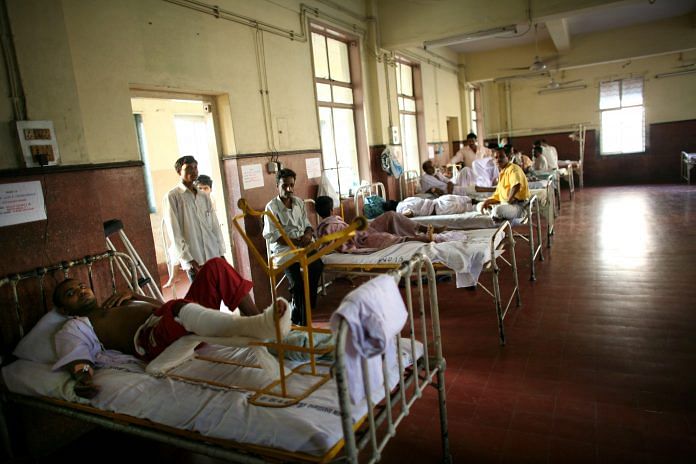In the budget, will we see new institutions come up to train more doctors? Or will the FM agree to the bizarre idea of alternative medicine bridge courses?
The health sector will be closely watching the budget to see if the finance minister delivers the ‘Health Assurance for All’ promise that figured in the manifesto in 2014. With less than 19 doctors and nurses for 10,000 people, India is in a crisis situation as per WHO standards. Given the New Medical Commission and its recommendations, will we see new institutions come up to train more doctors? Or will the FM agree to the bizarre idea of bridge courses for doctors from alternative medicine?
Will the budget allocate money for Health Special Economic Zones the government has thought of to garner higher FDI? In this context, there is already growing pressure from international investors, pharma companies and domestic players that the government withdraw the price controls and drug price lists that have already reduced investment in the healthcare and pharma sector. Will the FM buckle under this pressure?
The Government of India has now announced a new health policy that seeks to correct staff shortages, improve services and focus on yoga and traditional medicine The previous version came 15 years ago and was quite like this new one. Most of the targets look exactly as they did then. It is as if nothing has changed, neither the budgets, nor the indicators and not even the approach to the problem. If the government is indeed serious on a new policy, the FM must allocate substantially large grants for at least the three immediate goals set by the new policy.
Firstly, the infant mortality rate, that is the number of children who die per 1,000 live births is now at 41, and the NHP says this will be brought down to 28 by 2019. This will need huge outlays towards vaccination and nutrition. Secondly, the under-5 mortality rate that is 45 will be brought down to 23 by 2025. And the third is the maternal mortality rate which is 181 now and will be brought down to 100 by 2020. These are still unacceptably high numbers. The pittance that the women and child development ministry must go up at least now.
India’s abject failure in improving health expenditures and in providing essential public services has depressed living standards and continues to be a persistent drag on growth. In 2002, the previous policy had aimed at improving expenditure on health to 2 per cent of the GDP without specifying a date. The financial requirements are actually much larger than what is targeted in the new policy. The government must spend more than 3.8 per cent of its GDP on health, if India must indeed become a manufacturing superpower with a healthy and skilled workforce.
The only aspect on which the FM need not worry is fertility rates. The policy notes that fertility rates, or the number of children per young woman, is already down to 2.3. And the policy aims at reaching 2.1 by 2025. In fact, if present trends continue, we should reach this figure by 2021 itself. On other indicators, India performs worse than many of its neighbours and sometimes worse than Sub Saharan Africa. More than 2 million infants and children die from preventable illnesses; half a million die of tuberculosis and diarrhoea and malaria.
The Economic Survey talks of the need to create an educated and healthy workforce. It also urges upon the government to focus on malnutrition, skewed sex ratios, anaemia and low birth weight babies. According to the survey, India is poised to grow at 7 per cent plus starting this year. This will happen only when the budget follows this up, putting its money where the survey points to, and invests substantially higher in health, women and child development and sanitation this year to assure healthcare for all.
Amir Ullah Khan is Professor and Director at the Maulana Azad National Urdu University and Visiting faculty of economic policy at the Indian School of Business. He teaches health economics at the Manipal Institute of Technology.




Very well articulated. Time to learn fro Africa Creating last mile health provider.